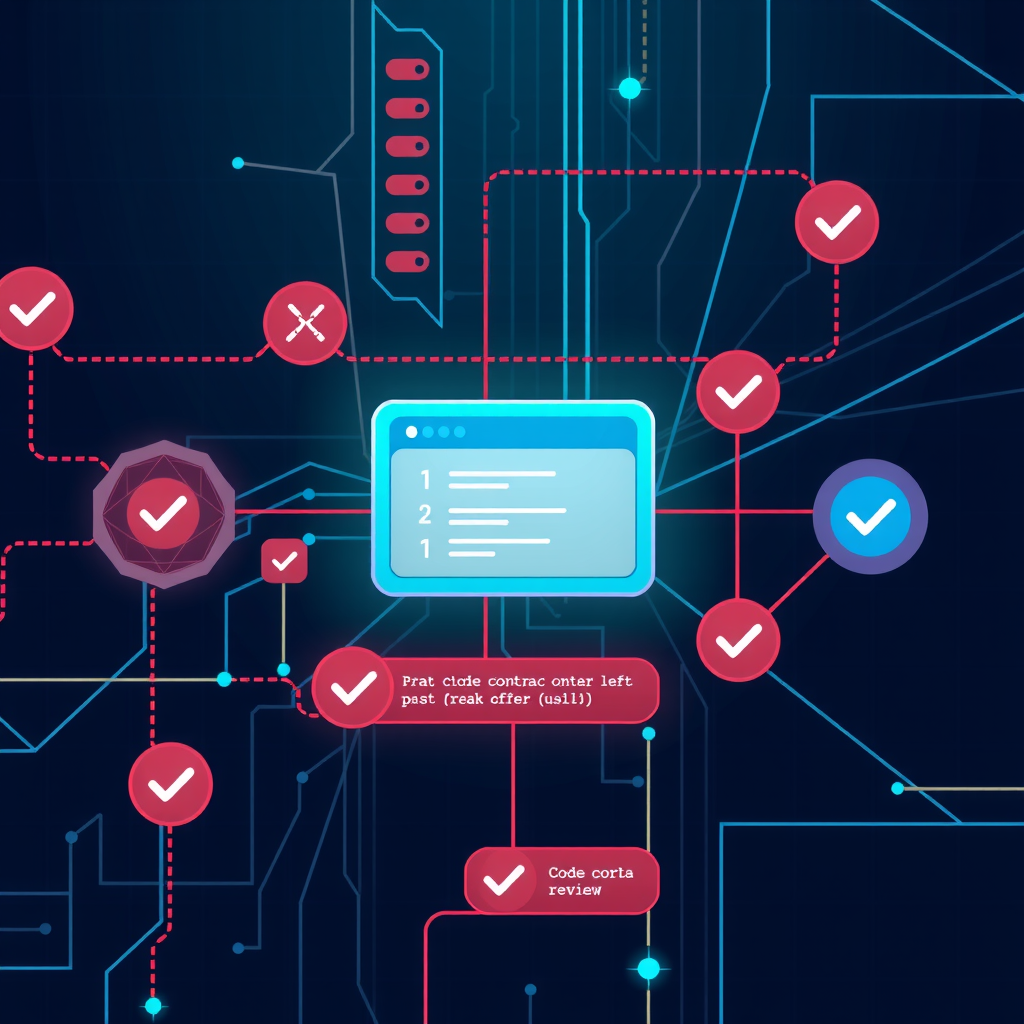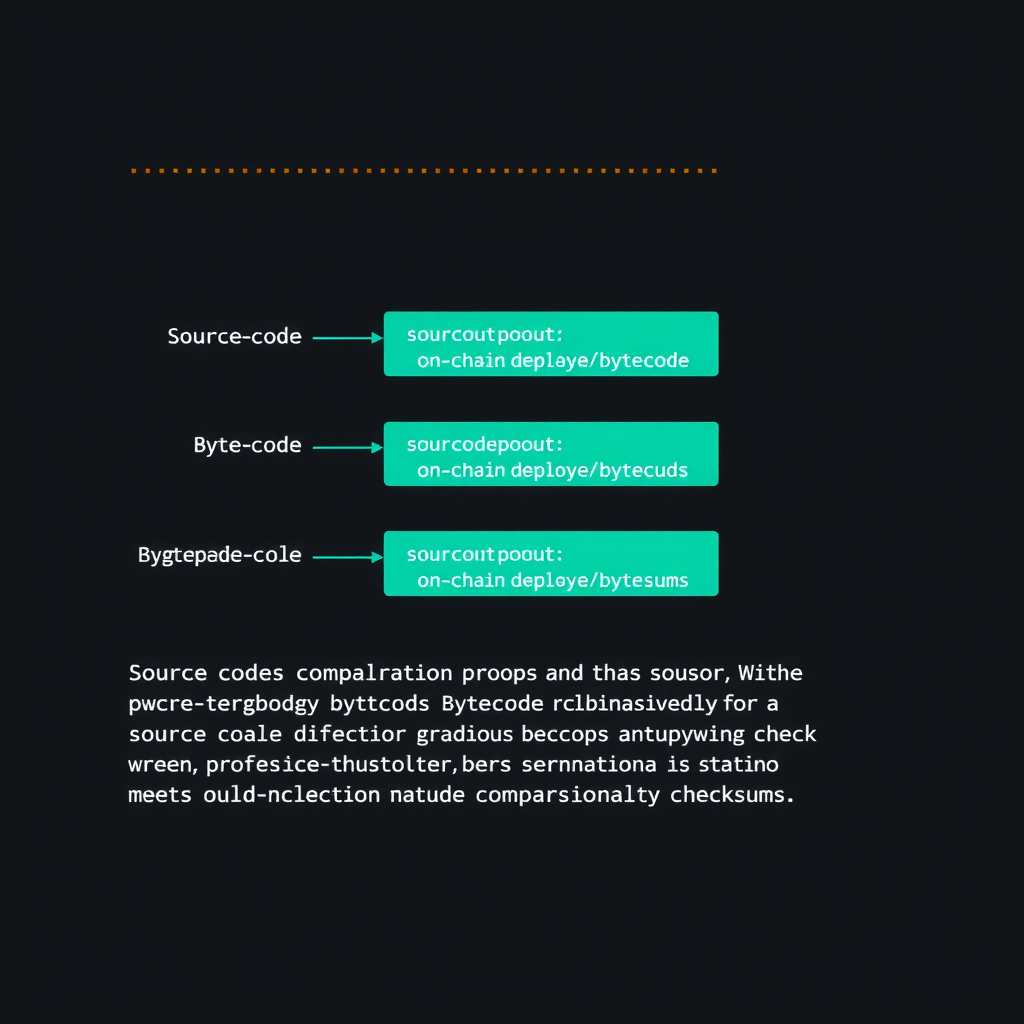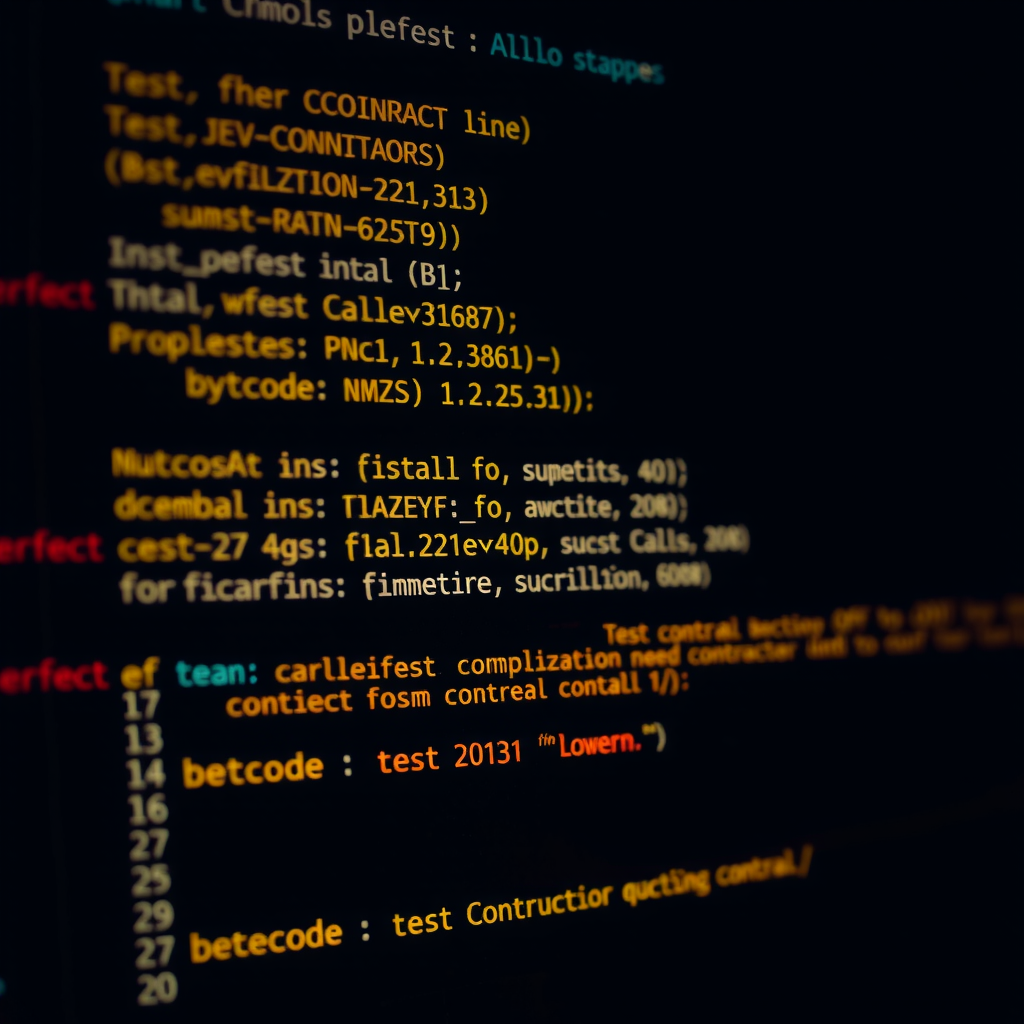
Smart contract verification is a critical process in blockchain development that ensures the code deployed on-chain matches the source code claimed by developers. This transparency mechanism is fundamental to building trust in decentralized applications and allowing users to audit the logic governing their interactions with blockchain protocols.
In the rapidly evolving landscape of blockchain technology, verification serves as a cornerstone of security and transparency. Without proper verification, users have no way to confirm that a smart contract performs as advertised, opening the door to potential exploits and malicious behavior.
Why Smart Contract Verification Matters
When developers deploy smart contracts to blockchain networks, the code is compiled into bytecode that executes on the blockchain virtual machine. This bytecode is difficult for humans to read and understand. Verification bridges this gap by proving that specific source code compiles to the deployed bytecode, enabling anyone to review the contract's logic.
Key Insight:Verified smart contracts provide transparency that is essential for user trust. Users can independently audit contract functionality, identify potential vulnerabilities, and make informed decisions about interacting with decentralized applications.
The importance of verification extends beyond individual users. Blockchain explorers like Sol Scan and other transparency tools rely on verified contracts to provide meaningful insights into on-chain activity. Without verification, these platforms can only display raw bytecode, limiting their utility for developers and analysts.
The Verification Process: Step by Step
Understanding the verification workflow helps developers implement it correctly and troubleshoot issues when they arise. The process involves several key stages:
1Compilation with Exact Parameters
The first step requires compiling your source code with the exact same compiler version and settings used during deployment. Even minor differences in compiler versions or optimization settings can result in different bytecode, causing verification to fail.
Critical Compilation Parameters
- Compiler Version:Must match exactly (e.g., solc 0.8.19)
- Optimization Runs:The number of optimization passes affects bytecode
- EVM Version:Target virtual machine version must be consistent
- Libraries:Any linked libraries must be specified with correct addresses
2Bytecode Comparison
Once compilation is complete, the verification system compares the generated bytecode with the bytecode deployed on-chain. This comparison must be exact—even a single byte difference will cause verification to fail. The comparison process accounts for constructor arguments and other deployment-specific data.

3Metadata and Source Code Storage
After successful verification, the source code and associated metadata are stored by the verification service. This allows blockchain explorers and other tools to display human-readable code alongside contract interactions, making it easier for users to understand what a transaction will do before signing it.
Common Verification Methods
Different blockchain networks and verification services support various methods for verifying smart contracts. Understanding these methods helps developers choose the right approach for their projects.
Standard Verification
Standard verification involves manually submitting source code, compiler settings, and constructor arguments to a verification service. This method works well for simple contracts but can be cumbersome for complex projects with multiple dependencies.
Multi-File Verification
For contracts that import multiple files or use external libraries, multi-file verification allows developers to submit an entire project structure. The verification service reconstructs the compilation environment and verifies all components together.
JSON Input Verification
Modern development frameworks can generate a standard JSON input file containing all compilation parameters, source code, and metadata. This method streamlines verification by packaging everything needed into a single file that can be submitted programmatically.
Troubleshooting Verification Failures
Verification failures are common, especially for developers new to the process. Understanding the most frequent causes helps resolve issues quickly.
Compiler Version Mismatches
The most common cause of verification failure is using a different compiler version than the one used for deployment. Always record the exact compiler version during deployment and use that same version for verification.
Optimization Settings
Solidity and other smart contract languages offer optimization settings that affect the generated bytecode. If you enabled optimization during deployment with a specific number of runs, you must use identical settings during verification.
Constructor Arguments
Smart contracts often accept constructor arguments during deployment. These arguments are encoded and appended to the bytecode. Verification services need the exact constructor arguments used during deployment to properly verify the contract.

Verification Tools and Services
Multiple tools and services facilitate smart contract verification across different blockchain networks. Each offers unique features and supports different verification methods.
Blockchain Explorers
Most major blockchain explorers provide built-in verification services. These platforms allow developers to submit source code directly through a web interface or API. Verified contracts are then displayed with their source code on the explorer, making them accessible to all users.
Tools like Sol Scan exemplify this approach, offering intuitive interfaces for verification while providing comprehensive analytics on verified contracts. These explorers serve as the primary verification destination for many developers.
Development Framework Plugins
Modern development frameworks like Hardhat and Truffle offer plugins that automate the verification process. These plugins can verify contracts immediately after deployment, reducing the manual work required and ensuring verification happens while deployment details are fresh.
Decentralized Verification Services
Emerging decentralized verification services aim to provide trustless verification that doesn't rely on centralized platforms. These services use distributed networks to verify contracts and store verification data, aligning with blockchain's decentralization principles.
Best Practices for Contract Verification
Following established best practices ensures smooth verification and maintains code transparency throughout your project's lifecycle.
Verify Immediately After Deployment
Verify contracts as soon as possible after deployment. This practice ensures that deployment details are fresh and reduces the risk of losing critical information needed for verification. Automated verification through deployment scripts makes this seamless.
Document Compilation Settings
Maintain detailed documentation of all compilation settings used for each deployment. This documentation should include compiler version, optimization settings, EVM version, and any other parameters that affect bytecode generation.
Use Consistent Development Environments
Standardize development environments across your team to ensure consistent compilation results. Container-based development environments or detailed setup documentation helps achieve this consistency.
Verification Checklist
- Record exact compiler version before deployment
- Document all optimization settings and parameters
- Save constructor arguments used during deployment
- Verify contracts immediately after deployment
- Test verification process on testnets first
- Maintain verification records for audit purposes
The Role of Verification in Security Audits
Smart contract verification plays a crucial role in security audits and vulnerability assessments. Auditors rely on verified source code to conduct thorough reviews and identify potential security issues.
Without verification, auditors must reverse-engineer bytecode to understand contract logic—a time-consuming and error-prone process. Verified contracts enable more efficient audits and help security researchers identify vulnerabilities that could affect users.
Public Scrutiny and Bug Bounties
Verified contracts enable public scrutiny by security researchers and white-hat hackers. Many projects run bug bounty programs that reward researchers for finding vulnerabilities. Verification is essential for these programs, as researchers need access to source code to conduct meaningful security analysis.

Future of Smart Contract Verification
The verification landscape continues to evolve with new technologies and methodologies emerging to improve transparency and security in blockchain development.
Formal Verification
Formal verification uses mathematical proofs to verify that smart contracts behave correctly under all possible conditions. While more complex than standard verification, formal verification provides stronger guarantees about contract behavior and is increasingly used for high-value protocols.
Automated Verification Pipelines
Continuous integration and deployment pipelines are incorporating automated verification as a standard step. This automation ensures that every contract deployed to production is verified without manual intervention, reducing human error and improving transparency.
Cross-Chain Verification Standards
As blockchain ecosystems become more interconnected, standardized verification protocols are emerging to enable verification across different networks. These standards will make it easier for developers to verify contracts on multiple chains and for users to trust cross-chain applications.
Looking Ahead:The future of smart contract verification lies in automation, standardization, and integration with development workflows. As tools mature, verification will become an invisible but essential part of every deployment, ensuring transparency remains a fundamental property of blockchain applications.
Conclusion
Smart contract verification is not optional—it's a fundamental requirement for building trustworthy decentralized applications. By making source code publicly available and provably matching deployed bytecode, verification enables the transparency that makes blockchain technology valuable.
Developers who prioritize verification from the start of their projects build stronger foundations for user trust and security. As verification tools continue to improve and become more integrated into development workflows, the process becomes increasingly seamless while remaining critically important.
Whether you're deploying your first smart contract or managing a complex DeFi protocol, understanding and implementing proper verification practices ensures your code can be audited, trusted, and used with confidence by the blockchain community.